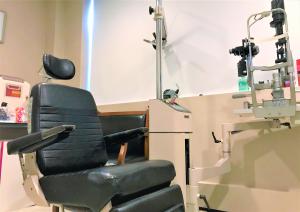Dr. Mark Fleckner Explains How to Prevent Diabetic Retinopathy
Diabetic retinopathy is a result of persistently high blood glucose levels where the sugar in the blood inhibits blood flow to the retinal tissue. The restricted blood flow can weaken and damage the vessels, which may result in a hemorrhage. This hemorrhaging can result in partial or complete vision loss.
People with type 1 or type 2 diabetes are at risk. However, those that do not have their blood sugar under control or who have had the disease for a long time are at greater risk.
Dr. Mark Fleckner advises the best thing you can do to prevent diabetic retinopathy, as well as other diabetes-related issues, is to keep your blood sugar tightly under control. This means working closely with your doctor and a nutritionist or dietician, eating a diabetes-friendly diet, and taking insulin if prescribed by your doctor.
Initially, Dr. Mark Fleckner says, people with diabetic retinopathy may not realize they have it. They may have blurry vision or difficulty seeing objects far away, but of course, these are not just symptoms of diabetes or diabetic retinopathy but can also be symptoms of other vision difficulties. Diabetic retinopathy becomes more apparent, Dr. Mark Fleckner said, when the person sees dark, floating spots that look web-like or stringy. They may experience patches of complete darkness, and eye fluid may leak from the retina. Conversely, the eye may be unable to drain at all. Leakage or blockage like this is known as diabetic macular edema or neovascular edema, respectively.
Mark R Fleckner MD said it is essential to seek attention from an eye care specialist immediately if you experience any of these symptoms. Not treating the condition can lead to blindness.
It is also important to see your eye doctor regularly to monitor eye health for this and other issues. If your ophthalmologist knows you are diabetic, they can test for retinopathy. The test begins by dilating the pupils and inspecting the eye for signs of leakage or blockage. The doctor may also perform a fluorescein angiography to further inspect the blood vessels in the eye, or use optical coherence tomography to get a different view of the eye and check for swelling.
If your doctor notices signs of retinopathy, they may prescribe medications to reduce swelling and slow vision loss. If the issue has progressed, a vitrectomy may be needed. With this surgery, Mark R Fleckner MD explained, the doctor removes some of the fluid from the leaking vessels or reduces the swelling.
Caroline Hunter
Web Presence, LLC
+1 7862338220
email us here
Legal Disclaimer:
EIN Presswire provides this news content "as is" without warranty of any kind. We do not accept any responsibility or liability for the accuracy, content, images, videos, licenses, completeness, legality, or reliability of the information contained in this article. If you have any complaints or copyright issues related to this article, kindly contact the author above.

